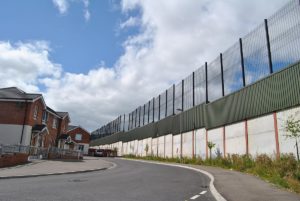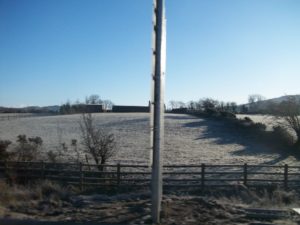Timeline of the Protestant and Catholic tension in Northern Ireland
First, there is the cultural boundary created by English colonists within Ireland. On one side is the Catholic Irish who resented the English for taking their land from them and their ancestors and forcing a fundamentally and categorically different legal system upon them with a clear intent of perpetual repression. The other side is the Protestant Northern Irish who had strong cultural and historical connections and felt superior to the Catholic minority in Northern Ireland. This was a boundary that characterized Northern Ireland’s dynamic for a long time and presented itself through skirmishes like Bloody Sunday in Derry all while creating physical borders such as the Derry Walls and Peace Lines in Belfast.
Second, these borders perpetuated boundaries by physically showing the Catholic inferiority and the Protestant superiority. These borders then construct more boundaries in the form of aggressive murals and violent Orange Parades that cemented and exemplified cultural rifts throughout cities like Belfast. Beyond reasserting the boundaries within the society they further engender the same resentments within the younger generation influencing them to participate in these struggles.

Thirdly, the decision to work together on the Belfast Agreement which addressed the issues of borders by lessening the overpowering presence of the military enforcement in Northern Ireland. Deciding that violence was not good for those on both side of the walls, it was decided that a compromise would be struck between Northern Ireland and the Republic of Ireland where Northern Ireland could stay under Britain’s rule, if all the citizens agreed to it, and the Republic of Ireland could convince them to join the Republic through peaceful means. It also encouraged cross-border relations by highlighting common ground where the two countries could work together to build a better sense of community.

Finally, after the agreement the general physical borders were not taken down out of fear of tampering with history and also that subtle awareness that the boundaries still exist in many Irish hearts. This helps create historical memory, almost always tinged with bias, and that memory gets perpetuated by the preservation of physical representations of boundaries like murals. The amount of sheer ignorance of each other’s side is astounding. Even to this day, some people have no idea what is on the other side of the peace line barrier in their community. As recently as 2013 these barriers reinforced in social and physical form, it is common to hear taxi drivers whose route goes right next to peace lines have no clue what’s on the other side. (If you want to read a separate article of a man’s experience with modern Belfast and its divisions click here)
